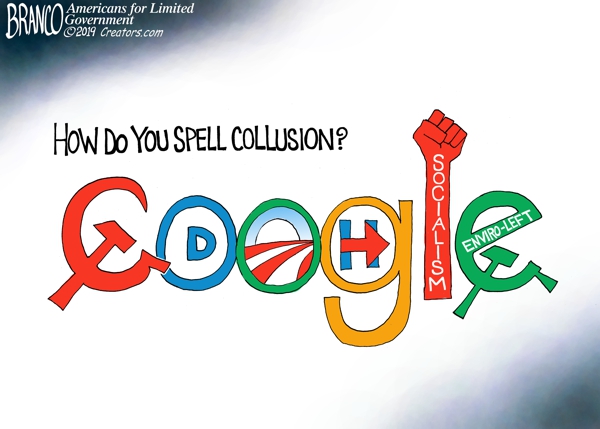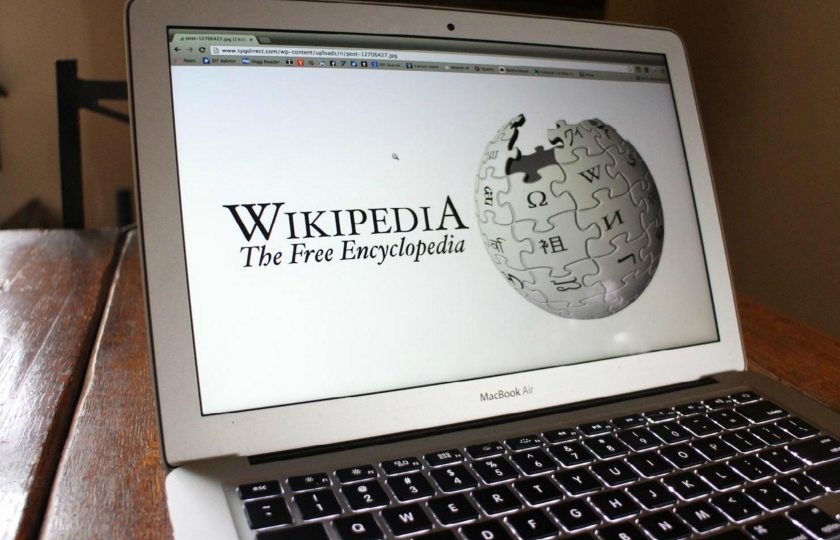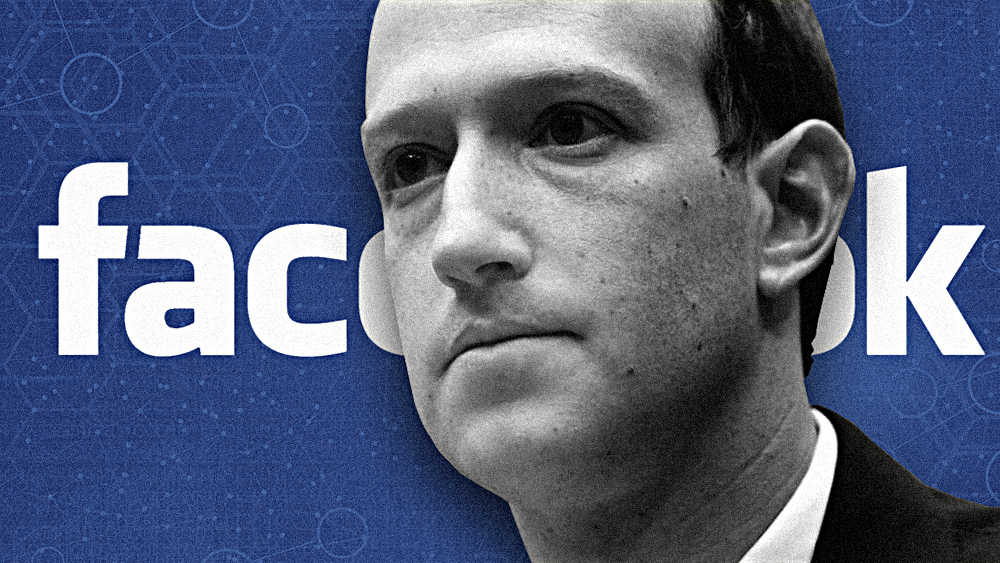Wikipedia: Supporting the dark side of medicine
04/11/2019 / By News Editors

Despite what doctors may tell their patients, medicine is not infallible. Bad treatments and dangerous drugs have persisted as universally-accepted medical practices for long periods of time, far beyond when people began to catch on to their dark side. During the 20th century, we willingly subjected ourselves to lobotomies, electroshock therapy, mercury amalgam fillings, thalidomide, tapeworm-egg diet pills, water fluoridation, heroin cough syrup, and insulin comas. Even in the still-young 21st century, the list of discredited drugs and treatments is long: Vioxx, with over 55,000 dead of heart attacks and strokes before it was pulled in the largest drug recall in history; Zyprexa, which causes diabetes, massive weight gain, and other forms of metabolic syndrome; Neurontin, which causes psychosis and suicides in patients with no preexisting mental issues; SSRIs, which cause the suicides they’re supposed to prevent; Fosamax and other osteoporosis drugs, which cause the bone loss they’re supposed to prevent; statins, which increase the risk of cancer, diabetes, and neurodegenerative disorders; mammograms, which spread the cancer they’re supposed to detect. It was not science or the medical profession that caused these once-popular treatments to fall out of favor, to be discredited and ultimately withdrawn from the marketplace. Nor was it the federal agencies charged with protecting the public health, the FDA and CDC. More often than not, it was whistleblowers, investigative journalists, citizen activists, and the victims who’d been damaged by these treatments who had no advocates in the Medical Industrial Complex or the government.
(Article by Helen Buyniski and Gary Null, PhD. republished from PRN.fm)
The vast majority of these treatments, all of which were considered beyond reproach at one time, should never have seen the light of day. Nothing has changed since the last crop of dangerous drugs was approved – if anything, there are even fewer patient protections in place, with pharmaceutical companies preferring to wait until a drug is already on the market to monitor patients for adverse effects. Instead of corporate integrity, proving at a very high standard of accountability that the drugs they are producing are safe and effective against actual placebos we have the halls of government overflowing with a colonized legions of lobbyists, scientists and physicians for hire, all there at the behest of big corporate interests protecting the proprietary profit stream. We see attractive young people with great personalities, good looks, and impeccable grooming, hired by the thousands by Big Pharma to get their drugs into doctors’ offices. All the more reason, then, to question the medical status quo. Big Pharma and its unsavory control over our entire government regulatory apparatus have packed the immunization schedules with more vaccines than ever, despite terrible evidence to support their safety and efficacy; the average child is on multiple medications, and so are their parents. We’re the most overmedicated nation in the world. Even the New England Journal of Medicine’s former editor Marcia Angell has said in no uncertain terms that these drugs are not being promoted based on real science and efficacy, but rather on profit and market share.
We have more people who are sick and dying of preventable diseases than ever before in American history, and it’s a $3.4 trillion a year business. The most profitable single industry on the planet is American medicine. While we acknowledge the exemplary quality of emergency medicine, we’re also equally concerned about the dismal failure of chronic care in treating common conditions like diabetes, arthritis, cancer and heart disease. Once again, we ask, who is looking after the well being and safety of the people? It is not the members of the medical-industrial complex; it is not the media, who are funded by pharmaceutical advertising; it is not our federal agencies, which are fully captured by these companies; it is not the think tanks or other foundations funded with enormous profits from the industry. Even the consumer advocates and whistleblowers of the late 20th century – the Ralph Nader and Jeffrey Wigands – have largely fallen silent, grown old, or died, or have been deemed persona non grata by the media, with the next generation having failed to fill their shoes.
Some people believe the responsibility for looking out for the little guy falls to Jimmy Wales and the self-selected group of experts who guard Wikipedia’s medical entries, deciding which are safe and effective medical treatments and procedures, which should be approached with caution, and which should be rejected altogether. But then we began to look into the background of Wales and his small band of Skeptics, the gatekeepers of all information involving health and medicine and alternative healing modalities on Wikipedia. Our years-long investigation has shown, clearly and unequivocally, that the Library of Medicine – the government’s official site for high quality peer reviewed articles – and the National Academy of Sciences; virtually all the major academic institutions that do research such as Harvard, Yale, Princeton, Columbia, and Brown; and tens of thousands of scientists and physicians doing original research and peer-reviewed clinical studies – all of these have shown compelling positive and encouraging results for natural treatments, nutrients as fundamental as vitamins C and E, magnesium, potassium, resveratrol, and curcumin; acupuncture and herbs such as those used in Traditional Chinese Medicine and Ayurveda; and chiropractic. Challenging this robust group of dedicated scientists, physicians, and researchers is…Jimmy Wales, who ridicules all complementary and alternative medicine, and research into these fields, as “the work of lunatic charlatans,” deeming it unworthy of accurate or balanced inclusion in Wikipedia. The Skeptics that zealously guard the gates of Wikipedia’s medical entries faithfully parrot the words of their spiritual leader, denigrating all practitioners of complementary and alternative medicine as “quacks.”
Are we to assign the same credibility to Susan Gerbic, a retired portrait photographer who leads the Guerilla Skepticism on Wikipedia initiative, teaching Skeptics how to strengthen their already formidable foothold in the encyclopedia, as we do to the hundreds of thousands of articles written by researchers from prestigious institutions that argue there are effective, proven ways to heal people using complementary modalities? Few among the Skeptics’ number have experience in the medical field at all. Their current white-coated superstar, Dr. David Gorski, appears to brim with barely-suppressed disdain for alternative medicine despite lacking clinical experience or board certification outside his limited field of surgical oncology. Where has he published the clinical studies he has conducted proving these treatments are ineffective? Surely he would not be so scientifically irresponsible as to condemn a healing modality without testing it. It is time for the world to reexamine the lack of objectivity, honesty, and fairness shown to those operating outside the rigid bounds of orthodox medicine who have made major progress and discoveries in healing patients. The pioneers expanding the horizons of medical treatment should be the ones trusted with our communal medical knowledge – not Wales, Gorski, or the other Skeptics. They are only capable of tearing down the contributions of others.
When we hear Gorski and other skeptics unconditionally condemn, with no firsthand experience, any and all alternative therapies as “unproven treatments” – then condemn any research into these therapies that proves their efficacy, their palpable fear and loathing of an entire field can be viewed as reaching the point of self-parody. Is one man’s opinion is supposed to scare the public away from pursuing these modalities? It is our opinion that this is McCarthyism, not medicine.
Gorski recently attempted to prove1 that concern over the deaths caused by orthodox treatments is excessive, that modern medicine’s downsides are not nearly as great as we’ve been led to believe. We take this matter very seriously, and recently revisited our multi-year investigation into the problem. Iatrogenesis kills a truly staggering number of Americans every year – 987,507, according to our most recent calculations,2 which used statistics from the CDC and other government agencies along with top-ranked medical journals like JAMA and BMJ. That’s significantly more than the number of people who died of heart disease, which killed 635,260 in 2016, or cancer, which ended 598,038 lives that year. While these diseases are also public health crises – indeed, the nation is unhealthier than it has ever been, with record rates of obesity and general metabolic ill-health – iatrogenesis has largely escaped public notice. There is no patentable drug to treat medically-induced death, and without a profit motive, there is no incentive to find a cure. While we’re only too happy to commend and recommend any procedure proven to save lives and improve quality of life without dangerous side effects, and while there are plenty of such treatments available to patients, there are far too many that aren’t, and there’s still no industry-wide efforts being made to fix the dark side of medicine.
Maverick voices within the medical community have been demanding reform for years to address the phenomenon of iatrogenic “death by medicine,” to no avail. Dr. Martin Makary wrote to the head of the Centers for Disease Control in 2016 to plead for a death certificate code for “medical error,” pointing out that the absence of such a code makes accurate measurements of iatrogenesis extremely difficult, as well as placing a roadblock in the way of funding solutions to the problem. The issue has been debated within the medical community ever since the Institute of Medicine’s landmark study “To Err is Human,” published in 1999, found 98,000 deaths every year were attributable to iatrogenesis.3 Subsequent studies, by Makary (2016) and patient safety advocate Dr. John T. James (2013), estimated 251,454 to 400,0004 and 440,0005 deaths, respectively, among hospital inpatients alone. Our own 2009 work Death by Medicine estimated 797,926 inpatient and outpatient deaths annually, and when we revisited those numbers this year, we were shocked to find they’d risen even higher, to approximately 987,507. The need for medical reform has never been more obvious, and we have written extensively about how this can be accomplished.
Gorski, however, categorically dismisses the idea that iatrogenesis is the third-leading cause of death, as Drs. Makary and James allege, never mind the first. Gorski scorns these respected doctors without addressing their arguments and fails to bring sufficient evidence to bear to back up his own argument, which relies heavily on his own medical authority. First, Gorski points out that there are only 2.7 million deaths in the US each year, and that if Makary’s figures are correct, it would mean 9-16% of those deaths were caused by medical error. This is absurd, Gorski says, without explaining how or why it’s absurd. Given the multiplicity of ways in which medical error can cause a person’s death, and the interactions with other factors and diseases, a 16% figure is extremely plausible. Even our own figure of 987,507 deaths – which would equate to 36% of all US deaths annually – is not outside the realm of possibility, considering how many people receive medical treatment in the weeks and months preceding death, or expire in hospitals. Given how few medical errors are reported – about 1 in 106 – it’s entirely possible that our numbers are too low! Gorski does not address the reporting gap – such a well-known problem in medical practice that entire bodies sprung up to address it following the passage of the Affordable Care Act. We believe this is because it doesn’t fit his argument. Instead, he maligns the Global Trigger Tool, which Makary used to calculate his error rate, claiming it is “arguably way too sensitive” without explaining exactly why he feels this way. The use of the weasel word “arguably” is telling, suggesting he may lack the facts to back up his argument, and such “weasel” words abound in his “deconstruction” of Makary’s 2016 BMJ paper.
Makary, Gorski writes, “conflated unavoidable complications with medical errors” – even though “unavoidable” is in the eye of the beholder, given that many safety practices now considered routine were unheard-of when the IOM study first brought patient safety into the mainstream in 1999. Medication reconciliation, for example – in which a doctor examines a patient’s chart to determine whether a drug the patient is taking will react poorly with the drug he is about to prescribe – was hardly discussed in 1999.7 Because Gorski does not specify what sort of “unavoidable complications” he means, it is difficult to address the argument beyond that, which is likely his point. Unavoidable complications are unavoidable – a tautology immune to logic and reasoning. More weasel words follow: Makary “didn’t consider very well whether the deaths were potentially preventable.” This hardly bears addressing – what is “very well?” How “well” would satisfy Gorski? The studies also “extrapolated from small numbers” – most likely because with no corresponding CDC code there’s no easy way to measure medical error on a nationwide scale, which is part of Makary’s point – and “used administrative databases, which are primarily designed for insurance billing and thus not very good for other purposes.” Once again, he fails to explain this statement – perhaps assuming that a lay reader will take his word for it. “Not very good” is another weasel word – compared to what? – betraying a weakness in his argument.
After that cursory attempt at poking holes in Makary’s conclusions, Gorski claims they are rendered invalid by a new study, published last month by Sunshine et.al. in JAMA Network Open (an open-access journal not to be confused with JAMA).8 This study uses data from the Global Burden of Diseases, Injuries, and Risk Factors study of 2016, specifically death certificates with “adverse effects of medical treatment” (AEMT) as their cause. Of course, as Makary has already pointed out, there is no ICD classification for “medical error,” and the researchers must make do by creating and combining categories from other causes of death to cobble together a statistical framework for measuring “adverse effects of medical treatment.” They make a valiant attempt to render such a study scientific, categorizing deaths under six headings: adverse drug events, surgical and perioperative adverse events, misadventure, adverse events associated with medical management, adverse events associated with medical or surgical devices, and “other.” There is a concerted effort to present such an unscientific method as rigorous and methodical, but such a method is at least as inexact as Makary’s study, for different reasons, and the numbers they surface are implausibly small: from 1990 to 2016, only 123,603 deaths are attributed to adverse effects of medical treatment. The study authors themselves admit that “ICD-coded death certificates have been shown to have varying degrees of reliability in identifying medical harm” – i.e. there’s no ICD death certificate code for iatrogenesis – and “many deaths involving AEMT are not captured either because of motivated misreporting or unintentional omission.” Indeed, some studies have found as few as one in 20 medical errors are reported, for reasons as varied as fear of retaliation, fear of lawsuits, and lack of knowledge of how to report such errors. The researchers also note that there are no ICD codes for several factors associated with AEMT that can contribute to or be the primary cause of a patient’s death, such as a failure to treat or improper diagnosis. Their statistical construct, then, is large parts guesswork.
Finally, Sunshine et.al. point out that the GBD study itself only allowed for a single cause of death to be assigned to each patient, meaning medical error as a contributing factor would have been omitted in many (if not most) cases – deaths resulting from nosocomial (hospital-acquired) infections, for example, would be classed by the pathogen involved, and accidental overdoses of prescription opiates would be listed as accidental poisonings. Gorski, however, omits nearly all of these mitigating factors in his discussion of the paper, holding up the numbers from this study as a vindication for orthodox medicine – essentially committing the same statistical sleight-of-hand he accuses Makary of perpetrating. Interestingly, he does not address James’ 2013 study, published in the Journal of Patient Safety, at all. We believe this is because James’ study examines “patient harms associated with hospital care,” not merely medical error, and is thus much more difficult to debunk using this decidedly un-scientific method. Gorski glosses over Null as an “uber-quack” without seriously addressing his statistics. In our opinion, this betrays a near-uncontrollable disdain for practitioners of complementary and alternative medicine, so strong he cannot suppress it even in an article that ostensibly has nothing to do with the subject. We are curious to know how he came to internalize such a visceral condemnation for healing modalities with which we believe he is unfamiliar.
After acknowledging, as the Sunshine study does, that ICD-coded death certificates “have shown varying degrees of reliability in identifying medical harm” (probably due to not having a code to represent it) and that the GBD study it is based on only allows for a single cause of death, Gorski instructs the reader to trust his judgment: “So let’s say that this study’s estimates of how many people die from AEMTs and, in particular, from medical misadventure, are better estimates than the ‘third leading cause of death’ studies. (I happen to think that it is, even if it might have somewhat underestimated AEMTs.)” He has already admitted the study’s statistical methodology leaves much to be desired, just like the ‘third leading cause of death’ studies he expresses such disdain for, but seems to believe he should be allowed to pick and choose which unreliable statistical methodology is closer to the truth. For someone who presents himself as a logical, rational medical professional, ending his screed on an appeal to faith is deeply ironic – but this is typical of the Skeptics’ milieu. They pay lip service to the scientific method, even calling their hyper-orthodox form of medicine “science-based medicine,” but when genuine scientific inquiry yields truths outside their comfort zone, they retreat back to the shelter of their dogma.
It is important to note that the Sunshine study’s authors don’t pretend their statistics are perfect, or sufficient to estimate the burden of AEMT by themselves. “Further work is needed to understand differences” between the GBD statistics and other means of detecting iatrogenic harms, they write, and the stats show promise only “in conjunction with other detection systems.” They praise the GBD statistics for their accuracy in measuring change over time, though the study shows conflicting trends in the rate of iatrogenic deaths from 1990 to 2016: an increased risk of mortality correlating with advancing age on one hand – a logical relationship, given that aging is often accompanied by more frequent doctor visits, hospitalizations, and prescriptions – and a slight decrease in deaths associated with AEMT over time when the researchers standardized for age on the other, a slight statistical tweak that gives the study a happy ending. It is a victory Gorski seems quick to claim as his own – while admitting, almost in the last sentence, that no amount of patient deaths due to medical error is acceptable. However, he claims, “several lines of evidence” show that such deaths are on the decline – where are these other lines of evidence? The Sunshine study is his only evidence, and its conclusions do not cancel out the results of Makary, James, and Null’s studies – all of which seem to show iatrogenesis is on the rise.
Gorski’s attempt at debunking the central role of medically-induced death in American mortality is a perfect example of the flawed science and pathological incuriosity of those who prop themselves up as medical experts on Wikipedia. These individuals appear to believe they are omniscient experts, yet they fail to do the honest research necessary to challenge their preconceived notions, instead relying on received opinion and hoary orthodoxy to defend the status quo. Anything remotely “implausible” – to use Gorski’s own epithet – is summarily excluded from the realm of possibility, even if it’s published in the hallowed pages of the British Medical Journal. One of the most prestigious medical journals in existence, by any standards, can be discounted without further consideration because one surgical oncologist in Detroit finds it “implausible” that medical error is killing people on a scale not previously thought possible. It is our opinion in a previous era, Gorski would have been the one ordering Galileo’s arrest for espousing the heliocentric theory of the solar system – after all, when everyone knows the sun revolves around the earth, it’s “implausible” to suggest otherwise.
Whereas a true scientist, confronted with a glimpse of the unknown, would pursue the inexplicable, the Skeptics close their eyes and ears to anything that challenges their Newtonian world-view. Worse, armed with the formidable propaganda tool that is Wikipedia, they force their lack of curiosity on others, closing the lines of inquiry for millions who might otherwise be interested in pursuing some healing modality not fully explained by scientific orthodoxy. Countless patients, diligently researching their conditions on the world’s most popular encyclopedia, doing what they believe is the responsible thing and taking charge of educating themselves, are irrevocably turned off to complementary and alternative medicine because of the vitriol spewed by Gorski and his Skeptic fellow travelers. Indeed, the vicious attacks of the Skeptics may be exacerbating the iatrogenic problem by forcing patients into harmful treatments, convincing them that any alternative and natural healing approach is not worth pursuing. No wonder Gorski does not want to admit iatrogenesis is the top killer of Americans.
Faced with the conservative, well-documented, and meticulously-researched statistics put forward by Drs. Martin Makary, John T. James, and Gary Null, Gorski clings to the one contradictory study he can find, in our opinion stubbornly misinterpreting and exaggerating its results to support his views that iatrogenesis is a minor issue undeserving of further attention. He claims that “grossly exaggerating the scope of the problem” does no one “other than quacks” any favors – but fails to explain how a quack would benefit from the medical community taking steps to address the high rate of error that currently slips by without being reported. Indeed, properly addressing the iatrogenesis issue would benefit orthodox medicine – and patients! – most of all, as it would go a long way toward restoring Americans’ trust in the medical profession. A 2009 study found one in three patients had experienced a medical error in the last two years alone.9 As a medical professional, Gorski should be concerned above all with the health of his patients – with healing them by any means necessary, even those considered “implausible” according to his medical school textbooks. In our opinion, he gives the impression he is primarily concerned with his reputation, and that of his profession, so much so that he’d rather tear down alternative healing methods proven to help patients than admit they may be effective. Gorski’s willingness to devote an entire blog post to minimizing the extent of iatrogenic harms, defending the failures of his fellow doctors instead of acknowledging that American medicine is in need of serious reform, speaks volumes.
Read more at: PRN.fm
Tagged Under: Alt-Left, bias, Big Pharma, Big Tech, Collusion, corruption, David Gorski, deception, disinfo, Fact Check, fake news, Fluoride, Glitch, gorski, health, Jimmy Wales, left cult, lies, lunatics, propaganda, quackery, science clowns, skeptics, tech giants, Toxic, Wikipedia, Wikipedia scam
RECENT NEWS & ARTICLES
COPYRIGHT © 2017 BIASED NEWS



















